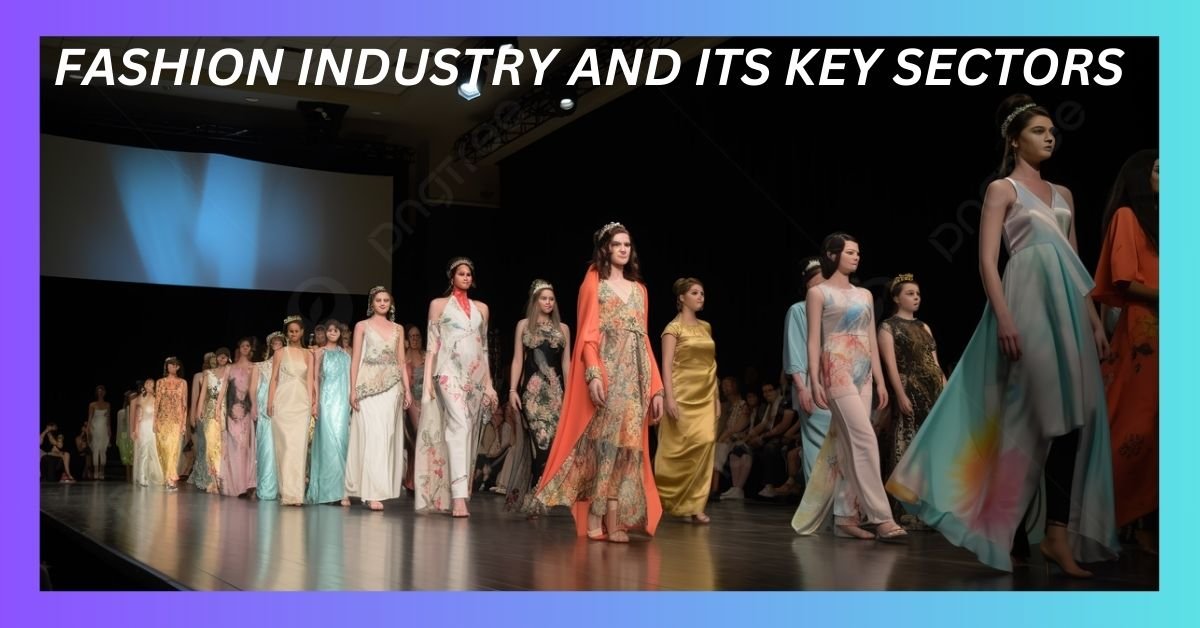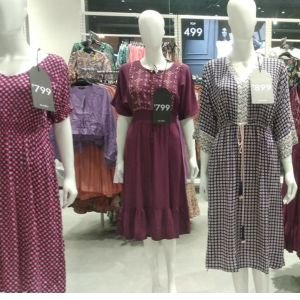
The fashion industry triggers huge economic activities across the world and causes multi-billion transactions of money at higher to lower levels and thus proves beneficial for millions of individuals and provides bases to the thousands of large and small industries. It promotes ideas, skills, and innovations with modern trends and also serves and promotes intellectualism.
FASHION INDUSTRY
Fashion industry is an engine of growth which triggers largescale economic activities keeping many other industries, businesses and skills in its fold. It is generally confused with garment industry but garment industry has a limited scope and deals with the design idea and produces ready-to-wear apparels while the fashion industry relates to ideas and has wider spectrum with highly innovative products like haute couture. Fashion industry is the main tent which houses many other industries such as textile industry, design and manufacturing, fashion retailing, marketing, fashion merchandizing and fashion show. In this way, it is a multibillion, multicultural and multilingual industry and its scope crosses over to the boundaries and finds its limit to the corners of the globe. It relates to every individual on this planet and generates huge economic activities and offers millions and millions of job opportunities and helps develop thousands of businesses.
The key sectors of the fashion industry are;
TEXTILE INDUSTRY

Textile industry is based on dresses and other apparels and provides a robust foundation to the fashion industry which seems to exist nowhere if there is no textile industry. Before the advent of modern machinery, the textile industry was limited to weaving which was a cottage industry. The cotton produced in fields was processed at home through homegrown tools into thread that was used by weavers in the villages. The hand-made clothes were sewn at home or at the most, the tailors made the clothes professionally to some extent.
With the industrial revolution, modern machinery was developed and many industrial sectors began to emerge and the textile industry had also seen drastic changes and smart machines began to produce high quality clothes at a large scale. This impetus provided very basics of the fashion industry as it largely relates to clothing and apparels.
The textile industry produces fabrics using natural fibers like cotton, wool, silk and linen. It also produces fibric by using synthetic fiber like nylon, acrylic and polyester. As the people are becoming more conscious about their health, they prefer to use fabric using natural raw material and this led to use of eco-friendly fibers made from natural material like hemp.
The textile industry produces fabrics with different effects through dying, weaving, printing, colour, texture, design as the industry keeps in view the customers’ demand and market trends.
- DESIGN AND MANUFACTURING

Designing and manufacturing is another key sector of the fashion industry as it involves innovation, skill and deep insight into the trends. One who keeps himself abreast of the changing scenarios and adjusts himself with what is going around remains relevant in the field otherwise cycle of change rules out the static entities. As analyses show, the fashion designers who earn fame in the field can be counted on the finger. These fashion designers are the trend setters and produce wide range of fashion collections such as haute couture, pret-a-porter or ready to wear garments. Contrary to the general belief, the designers do not generate new styles rather they keep the consumers’ demand supreme.
Most of the designers make their inputs to the manufacturers remaining in oblivion as designers are the unsung heroes of this industry. They transform the trendsetting style into the garments to be sold in the market for the average consumers.
The designers take inspiration from the variety of sources like film and television costumes, street style and active sportswear. The designers follow traditional methods to develop the designs such as pencil sketching and draping the design on the mannequins but the modern smart methods with highly sophisticated computer-based design techniques is replacing the traditional methods. The computing has facilitated the designers as they can now make changes rapidly to their designs and share them with others instantly.
- RETAILING SECTOR
The finished fashion products get their way to the retailing which is another important sector of the fashion industry. It is the retailing sector where products are put to assay of the customers and their response and reaction determine the marketability of the fashion products. The retailers acquire the products three to six months in advance and then these fashion products are put to sale and so the retailing is the bridge between the manufacturers and the end consumers. As the retailers have direct contact with the customers, they need to keep themselves abreast of the market trends, behaviour of the customers and their desires, wishes and priorities. The non-branding items give a tough competition to the retailers because the non-brand sector gives affordable and better choice to the customers. In most countries, traditional clothing is always a preference of most of the customers. The bridal wear is another point of concern to the brands particularly in countries and societies which are traditional and prefer to give priority to their cultural clothing and outfits.
- FASHION MERCHANDISING
Fashion merchandising is another key sector of the fashion industry and it is aimed at making best of the sale and profitability. Its approach is sublime making the best use of the market practice and as it involves the philosophy of selling suitable product at the suitable price, at the suitable time, at the suitable place and to the suitable customers. The fashion merchandisers must have up-to-date knowledge about the customers’ behaviour, their priorities, desires, market practices and the customers’ data. These aspects making it must for them to keep the stocks of the products in line with these factors and must have adequate quantity. The fashion merchandising needs practical approach because it involves selling the products making them attractive despite tough competition and ensuring profitability and discounting the products which are excess in stock.
Merchandising requires a complete marketing strategy because it requires making the products attractive and accessible to the customers. The products’ display in stores and at online sites in a fascinating way can give boost to sale as basic marketing strategy always remains at the core of all the businesses as it is proven fact that the more the customers are, the greater the profit will be. It is equally vital to ensure availability of the products at the merchandises. This supply chain as per the requirement of the customers having no lacuna is the foundation of running a robust business.
FASHION SHOW

Fashion shows are the medium which allows the fashion designers to approach the retailers, media and directly to the customers. It is their marketing strategy at the highest level as it addresses the people at the top most position and those at the helm of affairs whose opinion and reaction really matter. In the 19th century, couture houses in Paris introduced the trend of putting in view their products for their clients privately. In the 20th century, the fashion shows were being arranged with the models wearing trendy dresses cat-walking on the ramp. On the pattern of Paris couturiers, other people related to the business such as ready-to-wear designers began to conduct fashion shows in their countries and began to attract private clients, journalists and the buyers. The fashion shows became more elaborative in the 20th and 21st centuries as these have been arranged at more spacious venues with elevated runways where models played a vital role in showcasing the new fashions.
The fashions, fine clothing, marketing trends, looking attractive and presentable are the aspects based on desires more than the basic need which is restricted to cover the body and to protect self from the harshness of weather and this factor relates to a large chunk of human population of the world. An empty stomach and empty pocket cannot see beyond the basic needs. Fashion relates to the affluents and the wealthy and the fashion industry caters to the elite of the society. However, it is a sprawling industry involving countless skills, innovations and expertise and thus create millions and millions of job opportunities and provide a complete field for the small and large businesses and enterprises and in this way, the fashion industry serves all from high strata to the lower level.
FAQs (Frequent Asked Questions)
How much does fashion industry beneficial?
The fashion is an umbrella term as it encompasses many other small and big industries and thus provides jobs and business opportunities to millions and generates economic activities at large scale.
How does fashion industry promote intellectualism?
Fashion industry is based on ideas, innovations and designs and all these aspects are the manifestation of intellectualism.
Does Fashion industry serve all?
Though fashion industry addresses high strata of the society but it also serves all the segments.

